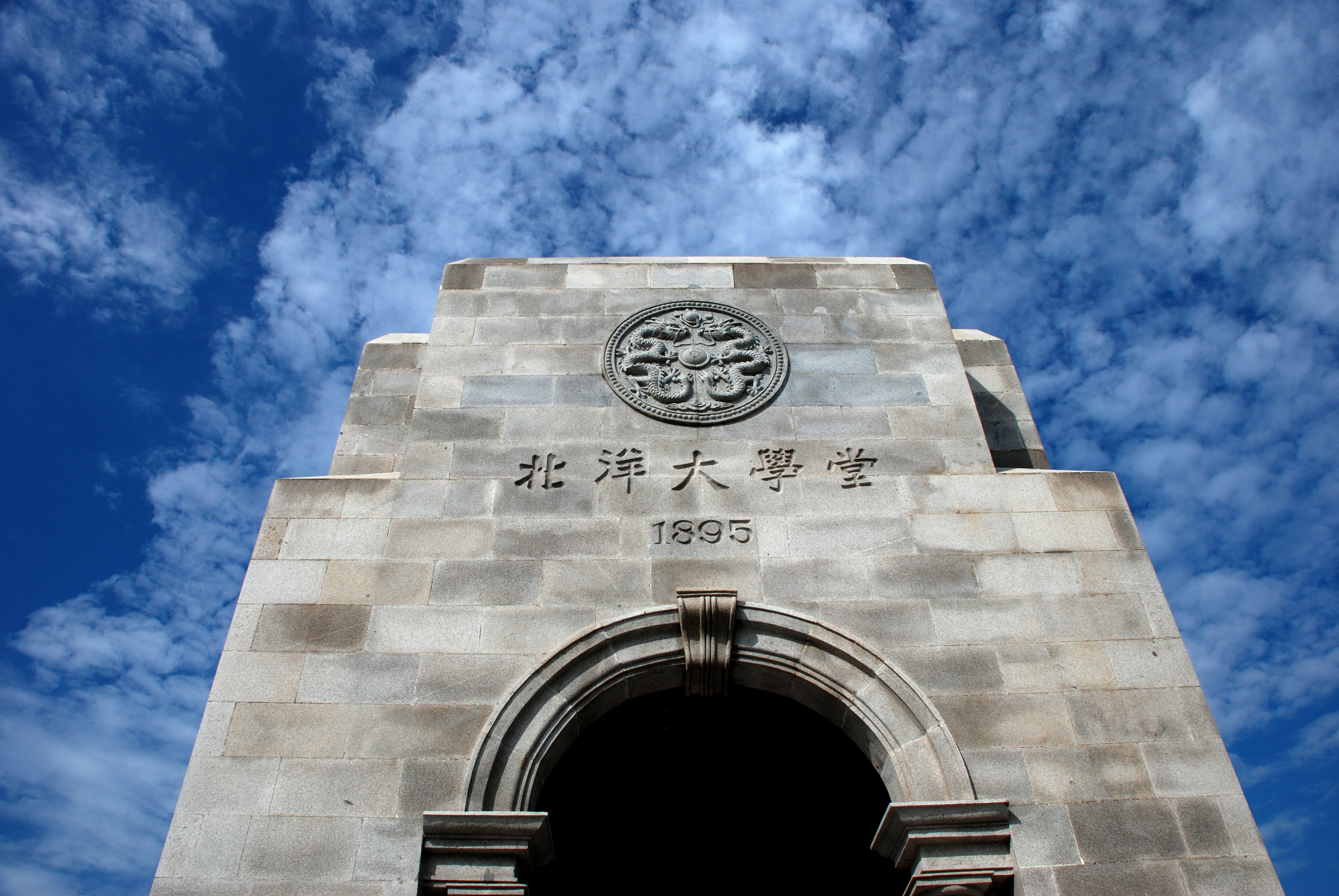


KEYNOTE:Fusion of TechnologiesABSTRACT: Fusion of technologies starts with interdisciplinarity which draws knowledge from different fields and creates new areas by working across boundaries. Product development is becoming exceedingly complex and innovative products require unrelated technologies combined in new ways. This talk begins with an introduction of STEM education and interdisciplinary learning. As teaching and research are the yin and the yang of successful universities, it is important to understand the teaching-research connections. If you have teaching without research, you risk of not creating new knowledge. If you have research without teaching, you risk of imparting past knowledge. So, what are the new skill sets and attributes in preparing young people to excel and succeed in the 21st century? To answer this question, a new education model in a new era is proposed. In addition, the fourth industrial revolution will change the world dramatically. The impact will be far greater than its three predecessors. Specifically, many existing PMET (Professional, Manager, Executive and Technician) jobs as well as traditional universities, technologies and industries will disappear. Together with the pandemic, they will accelerate the pace of digital transformation as well as create new job opportunities and growth areas. Finally, this talk will present new research areas. These exciting transformations will change how we think about research collaborations. It will also change the nature and direction of our research. What are the challenges of modern education? What are the next big things? How is it going to affect us? This talk will attempt to answer these questions.
|
KEYNOTE: Self-Evolving and Transformative (SET) Protocol Architecture for 6GABSTRACT: The fusion of digital and real worlds in all dimensions will be the driving force for future sixth-generation (6G) wireless systems. Ubiquitous in-time and on-time communication services between humans, machines, robots, and their virtual counterparts are essential, and they expand from the ground to air, space, underground, and deep sea. 6G systems are not only data pipelines but also large-scale distributed computing systems with integrated sensing, processing, storage, communication and computing capabilities. It is challenging to build ubiquitous and intelligent 6G systems, handling stringent quality-of-service (QoS) requirements, providing a rich set of communication modes, including unicast, multicast, broadcast, in-cast, and group-cast, and supporting user-centric mobile applications. In this talk, we introduce a new protocol architecture, Self-Evolving and Transformative (SET) architecture that can provide a wide range of control functions, and be intelligently configured for different types of 6G applications and networking environments. Its design principles, potentials, and open issues are discussed. We also introduce a use case applying the architecture to develop a mobility-aware multi-path QUIC protocol for satellite networks.
|
|
Lin Cai is a Professor with the Department of Electrical & Computer Engineering at the University of Victoria. She is an NSERC E.W.R. Steacie Memorial Fellow, an Engineering Institute of Canada (EIC) Fellow, a Canadian Academy of Engineering (CAE) Fellow, an IEEE Fellow, and a Royal Society of Canada's College Member, and a 2020 "Star in Computer Networking and Communications" by N2Women. Her research interests span several areas in communications and networking, focusing on network protocol and architecture design supporting emerging multimedia traffic and the Internet of Things. She has co-founded and chaired the IEEE Victoria Section Vehicular Technology and Communications Joint Societies Chapter. She is an elected member of the IEEE Vehicular Technology Society (VTS) Board of Governors, 2019 – 2024, and served as its Vice President. She is the Associate Editor-in-Chief for IEEE Transactions on Vehicular Technology and a Distinguished Lecturer of both the IEEE VTS Society and the IEEE Communications Society. |
KEYNOTE: A Knife Cuts Both Ways –Attacks and Defenses of Deep Neural NetworksABSTRACT: The flourishing Internet of Things (IoT) has rekindled on-premises computing to allow data to be analyzed closer to the source. Neural architecture search, open-source deep neural network (DNN) model compilers and commercially available toolkits have evolved to facilitate rapid development and deployment of Artificial Intelligence (AI) applications. This “model once, run optimized anywhere” paradigm shift in deep learning computations introduces new attack surfaces and threat models that are methodologically different from existing software-based attacks. Model integrity is a primary pillar for AI trust to ensure that the system delivers and maintains the desirable quality of service and are free from unauthorized deliberate or inadvertent manipulation of the system throughout the lifetime of their deployment. A superior and well-trained DNN classifier is not only an intellectual property (IP) of high market value but also consists of private and sensitive information. Unfortunately, existing DNN hardware implementations mainly focus on throughput and energy efficiency optimization, which can unintentionally introduce exploitable vulnerabilities. The situation is aggravated by the trend of outsourcing model training, renting cloud computing platforms, and deploying partially or fully trained third-party models for AI application development and edge inference. This talk will present some of our research works on the attacks and defenses of DNNs.
|
|
Chip Hong Chang is a Professor at the School of Electrical and Electronic Engineering of Nanyang Technological University, Singapore. He held joint appointments as Assistant Chair of Alumni of the School of EEE from 2008 to 2014, Deputy Director of the Center for High Performance Embedded Systems from 2000 to 2011, and Program Director of the Center for Integrated Circuits and Systems from 2003 to 2009. He was conferred the 2022 VISTA award of excellence in hardware security. He has coedited six books, published 13 book chapters, more than 120 international journal (more than 80 are IEEE) papers and around 200 refereed international conference papers (mostly IEEE). His current research interests include hardware security, AI security, biometric security, trustworthy sensing and hardware accelerators for post-quantum cryptography and edge computational intelligence. He has delivered more than 50 keynotes, plenary, tutorials and invited seminars. Dr. Chang currently serves as the Senior Area Editor of IEEE Transactions on Information Forensic and Security (TIFS), and Associate Editor of the IEEE Transactions on Circuits and Systems-I (TCAS-I) and IEEE Transactions on Very Large Scale Integration (TVLSI) Systems. He has held key appointments in the organizing and technical program committees of more than 70 international conferences (mostly IEEE). He is the 2018-2019 IEEE CASS Distinguished Lecturer, a Fellow of the IEEE, IET and AAIA. |
KEYNOTE: Electromagnetics in Medicine: Current Status and Challenges of Wireless Power Transfer, Antennas and Wireless SensingABSTRACT:
Electromagnetics in medicine has played a crucial role in early diagnosis, long-term monitoring and medical treatment. Numerous applications in medical diagnostics and therapeutics ranging from cardiac pacemakers to emerging devices in visual prosthesis, brain computer interfaces and body area networks have spurred electronic engineers to propose new wireless medical devices. Wireless implantable medical devices (IMDs) provide an opportunity to improve the patient health monitoring and treatment. To extend the lifespan without incorporating a bulky battery and to facilitate the miniaturization of IMDs, the wireless power transfer (WPT) technology and antenna miniaturization and multifunction have played an essential role. On the other hand, smart wireless sensing has increasingly been adopted in medical applications for monitoring, detecting and tracking of medical condition developments. In this presentation, solutions and developments on WPT, antenna and wireless sensing for biomedical applications will be presented.
|
|
Dr. Yongxin Guo is currently a Full Professor at the Department of Electrical and Computer Engineering, National University of Singapore (NUS). Concurrently, He is Director, Center for Peak of Excellence on Smart Medical Technology at NUS Suzhou Research Institute and Co-Director, Center for Smart Sensing and Artificial Intelligence, NUS Chongqing Research Institute. He has authored or co-authored over 500 international journal and conference papers, 4 book chapters and 1 book. He holds over 60 granted/filed patents in USA, China and Singapore. His current research interests include RF sensing, antennas and electromagnetics in medicine; wireless power for biomedical applications and internet of things; wideband and small antennas for wireless communications; and RF and microwave circuits and MMIC modelling and design. He has graduated 20 PhD students at NUS. Dr. Guo is a Fellow of IEEE and Singapore Academy of Engineering. He is serving as Editor-in-Chief, IEEE Journal of Electromagnetics, RF and Microwave in Medicine and Biology. He is a Distinguished Lecturer for IEEE Antennas and Propagation Society (2022-2024). He received the CityU HK 1st EE Outstanding Alumni Award in 2022. He was the recipient of 2020 IEEE Microwave and Wireless Components Letters Tatsuo Itoh Prize of the IEEE Microwave Theory and Techniques Society. He is serving as IEEE Biomedical Engineering Award Committee and served as the IEEE Fellow Evaluation Committee for IEEE Engineering in Medicine and Biology Society (2019-2020). Dr Guo was the Chair for IEEE AP-S Technical Committee on Antenna Measurement in 2018-2020. He has served as General Chair/Co-Chair for a number of international conferences/workshops. |
KEYNOTE: Where Technologist and Entrepreneur Meet to Stimulate Academic Spin-OffsABSTRACT: As indicated by Professor John L. Hennessy (Former President of Stanford University), “High-technology companies are both an important part of our world’s economic growth story as well as the place where many young entrepreneurs realize their dreams”. Starting from an old photo which was taken over around 1982, the speaker will first share his own story on how and why to develop the world’s first prototype of “Touch Phone (1982)”, with audiences. He will then couple his R&D experiences of over 36 years in the US industry and 10 years in academia across the world with his global touch and involvements with several startups. This talk will blend technology, liberal art, creativity, innovation, business and management together to guide the audiences to go through an interdisciplinary process from “Curiosity > Opportunity> Business Model> Risk Management> Technology Commercialization and Business Innovation”. A Case study will be also discussed. At the end of this talk, the speaker hopes that the audiences will have a first-hand feeling to understand how technologist and entrepreneur transfer their curiosity, hard work, and ambition at the very early stage into decisive actions of establishing their own enterprise, and then eventually expand it to one of the top Fortunate 500 corporations in the world. In the meantime, the creation of academic spin-offs from universities research labs and research institutes are now playing a key mechanism of the technology commercialization for IPRs-based research prototypes. University spin-offs are now starting to play a critical role for economic development, Commercializing university technologies and also helping university with their major missions of research and teaching. Based on speaker’s own experiences as corporate technical staff, director and executive director for 26 years and then visiting professor (since 2012); Hopefully this talk might be able to stimulate audience’s entrepreneurial spirit, and ultimately encourage some of faculty members and students to make their dreams of having their own Technology Start-Ups through Academic Spin-offs. 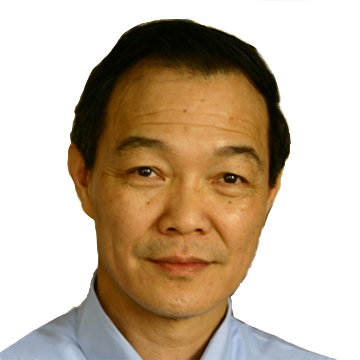 Professor T. Russell HSING IEEE Life Fellow and Fellows for the British Computer Society, AAIA and SPIE. Adjunct Professor in the Chinese University of Hong Kong, and also Visiting Professor in UC Davis |
|
Dr. T. Russell Hsing is IEEE Life Fellow and Fellows for the British Computer Society, AAIA and SPIE. He accumulated rich R&D experiences of 40+ years as technical staff, research/engineering director and executive director through affiliations with Burroughs, Xerox, GTE Labs, Telco Systems Fiber Optics Corporation, TASC and Bellcore/Telcordia/Ericsson since 1977. He is currently Adjunct Professor in the Chinese University of Hong Kong, and also Visiting Professor in UC Davis. During his tenure at Telcordia, he has co-established two significant R&D centers with President and Vice President of Bellcoe / Telcordia in Taipei , and Poznan (Poland). Both centers focused on advanced ICT partnering with local institutions to win significant contract funding from both commercial and local government sources. Since late 2012, he has been visiting professors at numerous universities around the world including mianland China, US, Singapore, India, Korea, Ireland, China Hong Kong and China Taiwan. He was Board Member for the Open Fog Consortium in 2016-2018. He has been teaching the courses of “Technology Entrepreneurship: From IP to IPO” (since 2014) and “Internet Economics” (since 2017). His research interests include AI- Powered Fog/Edge Computing & Networking and Platform, Internet Economics, Fogonomics, Vehicular Telematics & Services, Wireless 5G/6G , Quantum Communication research, Next Generation IoT Services/ Applications, and Academic Spin-offs. Currently he is Advisory Board Member for the IEEE Fog/Edge Industrial Community. He is now Board Advisor/Mentor for few academic spin-offs in US, Taiwan China, Ireland and Poland. |
KEYNOTE: Machine Learning for Optimized Use of Network ResourcesABSTRACT: Optimization techniques are widely used to allocate limited resources in communication networks. The speaker will start by showing the well-known Transport Control Protocol (TCP) as a distributed solution to achieve the optimal bandwidth allocation. Unfortunately, factors such as multiple grades of service, variable transmission power, and tradeoffs between communication and computation often make the optimization problem for resource allocation non-convex. New distributed solutions are needed to solve these problems. As an example, the speaker will consider in-network data processing in sensor networks where data are aggregated along the way as they are transferred toward the end user. Finding the optimal solution is NP-hard, but for specific settings, the problem can lead to a distributed framework for achieving the optimal tradeoff between communications and computation costs. For the afore-mentioned problems, gradient-based iterative algorithms are commonly used as a solution technique. Much research focuses on improving the iteration convergence. However, when the system parameters change, it requires a new solution from the iterative methods. The speaker will present a new machine-learning method by using two Coupled Long Short-Term Memory (CLSTM) networks to quickly and robustly produce the optimal or near-optimal solutions to non-convex, constrained optimization problems over a range of system parameters. Numerical examples for allocation of network resources will be presented to confirm the validity of the proposed method. 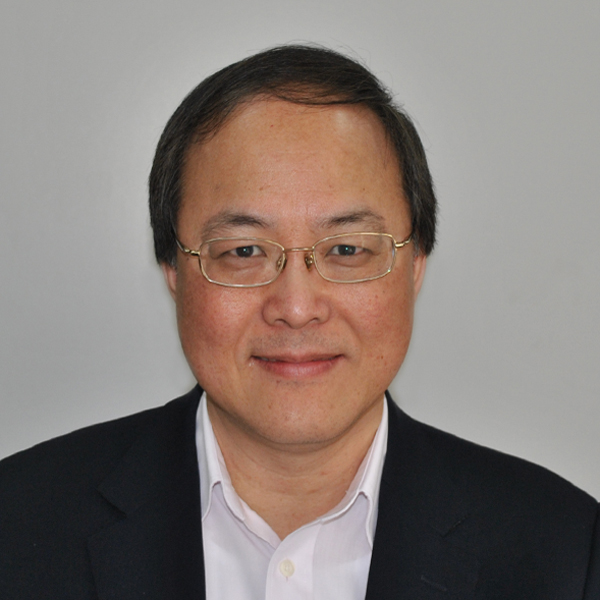 Professor LEUNG Kin K IEEE Fellow; Professor of Electrical and Electronic Engineering, and Computing Departments, Imperial College London |
|
Kin K. Leung received his B.S. degree from the Chinese University of Hong Kong, and his M.S. and Ph.D. degrees from University of California, Los Angeles. He joined AT&T Bell Labs in New Jersey in 1986 and worked at its successor companies until 2004. Since then, he has been the Tanaka Chair Professor in the Electrical and Electronic Engineering (EEE), and Computing Departments at Imperial College in London. He serves as the Head of Communications and Signal Processing Group in the EEE Department at Imperial. His current research focuses on optimization and machine-learning techniques for system design and control of large-scale communications, computer and sensor networks. He also works on multi-antenna and cross-layer designs for wireless networks. He is a Fellow of the Royal Academy of Engineering (2022), IEEE Fellow (2001), IET Fellow (2022), and member of Academia Europaea (2012). He received the Distinguished Member of Technical Staff Award from AT&T Bell Labs (1994) and the Royal Society Wolfson Research Merits Award (2004-09). Jointly with his collaborators, he received the IEEE Communications Society (ComSoc) Leonard G. Abraham Prize (2021), the IEEE ComSoc Best Survey Paper Award (2022), the U.S.–UK Science and Technology Stocktake Award (2021), the Lanchester Prize Honorable Mention Award (1997), and several best conference paper awards. He currently serves as the IEEE ComSoc Distinguished Lecturer (2022-23). He was a member (2009-11) and the chairman (2012-15) of the IEEE Fellow Evaluation Committee for the ComSoc. He has served as guest editor and editor for 10 IEEE and ACM journals, and chaired the Steering Committee for the IEEE Transactions on Mobile Computing. Currently, he is an editor for the ACM Computing Survey and International Journal on Sensor Networks. |
KEYNOTE: CMOS Frequency Generation - From RF to Millimeter-Wave and Sub-THzABSTRACT: Recent convergence of technologies have inspired and enabled many interesting emerging applications - including 5G/6G communications, artificial intelligence, Internet of Everything, bioelectronics, imaging, and sensing - but at the same time have imposed unprecedented challenges for systems-on-chip designs. As ubiquitously required in each and every of these systems, a clock or frequency generator needs to achieve higher and higher performance in terms of high frequency, low phase noise, wide frequency tuning range, and low power consumption. This talk will review recent design challenges and potential solutions to realize such signal generators covering ultra-wide frequency range from RF and mmW to sub-THz and beyond. Detailed description and comparison to traditional designs will be discussed. Finally, designs and measurements of several clock generators with state-of-the-art performance will be presented as case studies. 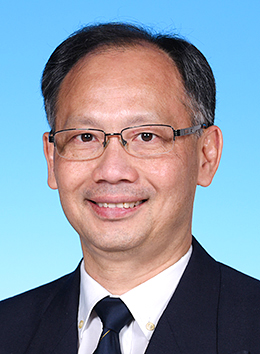 Professor Howard Cam LUONG IEEE Fellow; Professor of Hong Kong University of Science and Technology; Associate Editor of IEEE Solid-State Circuits Letters (SSCL) and IEEE Virtual Journal on RFIC; Technical program committee member of IEEE International Solid-State Circuits Conference (ISSCC) |
|
Howard Luong received his BS, MS, and PhD degrees in Electrical Engineering and Computer Sciences (EECS) from University of California at Berkeley in 1988, 1990, and 1994, respectively. Since September 1994, he has joined the EEE faculty at the Hong Kong University of Science and Technology where he is currently a professor. Prof Luong’s research interests are in RF and analog integrated circuits and systems for wireless and portable applications. He was an Associate Editor for IEEE Transactions on Circuits and Systems II (TCAS II) from 1999 to 2002 and a Technical Program Co-Chair of the 2008 IEEE Asian Pacific Conference on Circuits and Systems (APCCAS). He currently serves as an Associate Editor for IEEE Transactions on Circuits and Systems I (TCAS I) and as a technical program committee member of many international conferences including Custom Integrated Circuits Conference (CICC), European Solid-State Circuits Conference (ESSCIRC), Asian Solid-State Circuits Conference (A-SSCC), and IEEE International Symposium on Radio-Frequency Integration Technology (RFIT). |
KEYNOTE:Passive-Intensive Bluetooth LE Receiver for Internet of EverythingABSTRACT: The fundamental elements MOS switch, capacitor and inductor (transformer) are revitalized for their potentials to passive-ize the critical RF and analog functions of the wireless radios, aiming to alleviate the obvious tradeoff between the noise, linearity and power consumption. Imagine a low-noise amplifier (LNA) using no transconductance (gm) can be highly linear, while the voltage gain, input-impedance matching and noise figure (NF) are the metrics to innovate. We demonstrate how a Bluetooth LE receiver using no gm can achieve high linearity, and high RF-to-baseband gain (>30dB) to suppress the noise effect of the subsequent circuitry, yielding an outstanding SFDR of 77dB at a sub-300µW power budget. These examples pace the way to build a greener world of energy-autonomous wireless radios for the Internet-of-Everything (IoE) era. 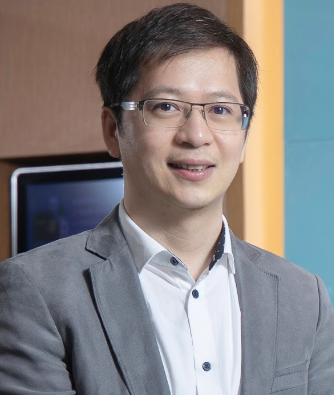 Professor Pui-In MAK IEEE Fellow; IET Fellow; RSC Fellow; Deputy Director (Research) Institute of Microelectronics of University of Macau; Chinese Academy of Sciences Overseas Expert |
|
Professor of the University of Macau, Deputy Director of the Institute of Microelectronics, Deputy Director of the State Key Laboratory of Analog and Mixed-Signal VLSI. IEEE Fellow, IET Fellow and Chinese Academy of Sciences overseas review expert. Bachelor (3 years) and Doctor (3 years) in Electrical and Computer Engineering from UM. Focusing on the field of RF and analog circuits, he is an internationally recognized expert in the field of integrated circuits. |
KEYNOTE: Applications of Phase Change Material (PCM) Technology in Tunable Filters and in Other Reconfigurable Microwave and Millimeter-Wave DevicesABSTRACT: Microwave and Millimeter-wave switches are key components in communication systems. They are used for signal routing and for realizing a wide range of reconfigurable microwave and millimeter-wave devices. Phase Change Materials (PCM) have been widely used in optical storage media and non-volatile memory device applications. Over the past recent years, there have been interest in exploiting the PCM materials such as germanium telluride (GeTe) and metal insulator transition materials such as vanadium oxides (VO2) for RF applications. The principle of operation of PCM devices is based on the ability of the material to transform from a high-resistivity state (amorphous phase) to a low-resistivity state (crystalline phase) and vice versa with the application of short duration pulses. Several orders of magnitude in resistivity change can be achieved by PCM technology allowing the realization of highly miniature microwave and millimeter-wave switches. In addition to miniaturization, GeTe based switches offer latching functionality and ease of monolithic integration with other RF circuits. This talk will address recent developments in PCM switches and their applications to the realization of reconfigurable filters, switch matrices, phase shifters, variable attenuators, and reflective intelligent surfaces. It outlines major design considerations for tunable filters presenting techniques to realize tunable filters that maintain filter performance over tuning range, illustrating examples of tunable filters tuned only a by single tuning element. The talk also addresses existing tuning technologies, providing a comparison between Semiconductor, MEMS and PCM tuning elements in terms of linearity, insertion loss, suitability for use at millimeter-wave frequencies and ease of integration with high-Q filters. Very recent results for PCM-based reconfigurable acoustic filters are also presented. 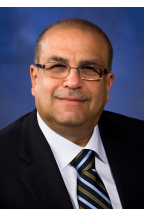 Professor Raafat MANSOUR IEEE Life Fellow, a Fellow of the Canadian Academy of Engineering (CAE), a Fellow of the Engineering Institute of Canada (EIC),Professor of Electrical and Computer Engineering at the University of Waterloo |
|
Raafat Mansour is a Professor of Electrical and Computer Engineering at the University of Waterloo and holds Tier 1 - Canada Research Chair (CRC) in Micro-Nano Integrated RF Systems. He held an NSERC Industrial Research Chair (IRC) for two terms (2001-2005) and (2006-2010). Prior to joining the University of Waterloo in January 2000, Dr. Mansour was with COM DEV Cambridge, Ontario, over the period 1986-1999, where he held various technical and management positions in COM DEV’s Corporate R&D Department. Professor Mansour holds 44 US and Canadian patents and more than 420 refereed IEEE publications to his credit. He is a co-author of a 23-chapter Book published by Wiley and has contributed 7 chapters to five other books. Professor Mansour founded the Centre for Integrated RF Engineering (CIRFE) at the University of Waterloo https://uwaterloo.ca/centre-integrated-rf-engineering/. It houses a clean room and a state-of-the-art RF test and characterization laboratory. He was as the Technical Program Chair of the 2012 IEEE International Microwave Symposium (IMS). Professor Mansour is a Life Fellow of the IEEE, a Fellow of the Canadian Academy of Engineering (CAE), a Fellow of the Engineering Institute of Canada (EIC). He was the recipient of the 2014 Professional Engineers Ontario (PEO) Engineering Medal for Research and Development and the 2019 IEEE Canada A.G.L. McNaughton Gold Medal Award. |
KEYNOTE:Analog and Mixed-Signal CMOS Circuits at the core of the A/D Interface in the Internet-of-Everything (IoE)ABSTRACT: China imported in the recent past more “sand” than oil, meaning silicon transformed into electronic chips, quite crucial in a moment where the quest is no longer for energy (oil), as in the past, but for computing power (silicon). The national high demand for state-of-the-art integrated circuits is driving research and development in the run after a Chinese CPU (Electronics Brain). Besides the Brain, all Electronics needs its Senses that are at the core of the Analog/Digital Interface with Audio, Vision & Sensors, essential for the Internet of Everything – IoE, because a brain does not work without a sensing system. University of Macau (UM) and its State Key Laboratory of Analog and Mixed-Signal VLSI are prominent and now renowned for its excellence and expertise in the design of innovative circuits for the analog/digital interface, contributing to address also A/D Interface Independency. In a recent book entitled “Analog and Mixed-Signal Circuits in Nanoscale CMOS” we presented the most critical building blocks of such interface that are high-performance radios, power-efficient RF and mm-Wave circuits, ultra-low-voltage clock references, low power and high-performance data converters, integrated energy harvesting interfaces, fully integrated power converters and low-dropout regulators. All these circuits need to exhibit high quality performance with low power consumption, high energy-efficiency and high speed, thus enabling a reliable and consistent development of the IoE while enlarging its frontiers. There is a huge pressure in the design area with a high demand for analog design engineers, opening a vast field of opportunities and challenges that imply a continuous knowledge update. Then, UM is contributing to stimulate and well-equip the mind of future skillful analog design engineers in state-of-the-art designs adequate for most applications. 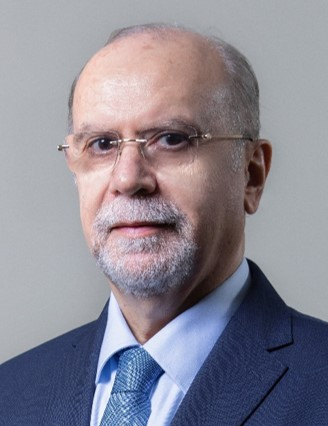 Professor Rui Paulo Da Silva MARTINS IEEE Fellow; Expert in Microelectronics; Academician of Academy of Sciences of Lisbon, Portugal; Vice President (Global Affairs); Chair Professor of University of Macau; Dean of Institute of Microelectronics, University of Macau |
|
Rui Paulo da Silva Martins, born on April 30, 1957 in Lisbon, Portugal, microelectronics expert, IEEE Fellow of the Institute of Electrical and Electronics Engineers, Academician of the Academy of Sciences of Lisbon, Portugal, Vice President (Global Affairs), Chair Professor of the University of Macau, Dean, Institute of Microelectronics, University of Macau. His research interests include electronics, analog and mixed-signal VLSI. |
KEYNOTE:Signal Integrity Design for Air-filled Interconnect in 5G/6G Communication NetworkABSTRACT: Driven by the evolution of commercial applications and user experience, the demand of 5G/6G high-speed communication is increasing rapidly in recent years. Data transmission in millimeter-wave (mm-wave) and subterahertz (sub-THz) is gaining interest to provide widely available bandwidth and meet the requirement for higher capacity and lower latency. Interconnects with low power loss and good signal integrity are necessary for 5G/6G communication network. Among all competitors, air-filled interconnect may play an essential role for 5G/6G applications. Air-filled substrate integrated waveguide (AFSIW) offers an extremely low-loss solution for inner-board transmission. And air-filled dielectric waveguide (AFDW) provides a low-loss solution for intra-device transmission with short-to-medium distance. Moreover, highly-integrated multi-lane AFDWs are expected to achieve communication with even higher throughput. However, the interference issue is critical. To enhance signal integrity of multi-lane AFDW, photonic crystal fence (PCF) can be applied compactly with AFDWs and provide significant crosstalk reduction. These techniques take a key step for the technical race in the 5G/6G high-speed communication in the near future. 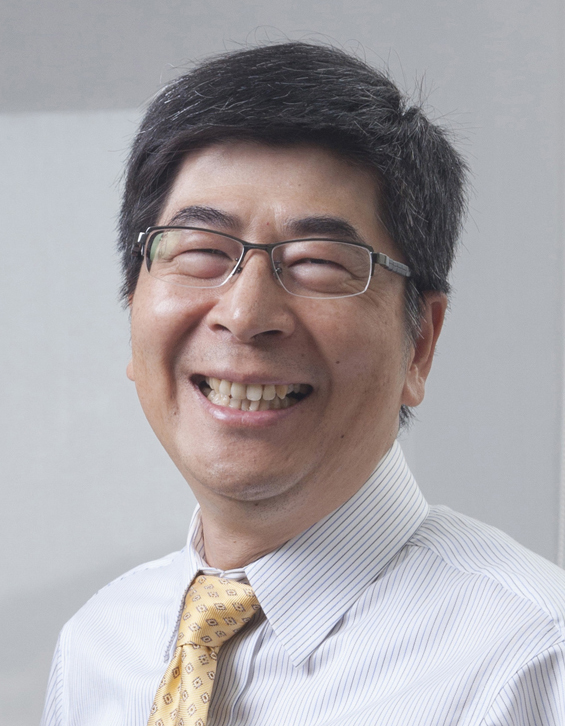 Professor WU Tzong Lin IEEE Fellow, Associate Dean and Distinguished Professor at Department of Electrical Engineering &,Graduate Institute of Communication Engineering,National Taiwan University (NTU) |
|
Associate Dean and Distinguished Professor, Department of Electrical Engineering, Graduate School of Communication Engineering, National Taiwan University. His research interests include electromagnetic compatibility/interference, chip-package-board co-design for signal and power integrity, microwave circuit element design, and electrical analysis of 3D chips. |
KEYNOTE:Stacked Intelligent Metasurfaces Enabled Joint Computing and Communication in the Wave DomainABSTRACT: We propose a new wave-based computing architecture called stacked intelligent metasurfaces (SIM) to enable joint computing and communication in electro-magnetic (EM) domain. An SIM is fabricated by stacking an array of programmable metasurface layers, where each layer consists of many low-cost passive meta-atoms that can individually manipulate EM waves. By appropriately configuring the passive meta-atoms, an SIM can automatically accomplish advanced computation tasks as the EM wave propagates through it, while reducing both the energy consumption and processing delay. In this talk, we will illustrate the application of SIM in multiple-input multiple-output (MIMO) and multi-user MIMO wireless communications.  Professor Yuen CHAU IEEE Fellow; Professor of Nanyang Technological University, Singapore; Editor-in-Chief for Springer Nature Computer Science |
|
Professor Chau Yuen received the B.Eng. and Ph.D. degrees from Nanyang Technological University, Singapore, in 2000 and 2004, respectively. Since 2023, he has been with the School of Electrical and Electronic Engineering, Nanyang Technological University. Dr Yuen current serves as an Editor-in-Chief for Springer Nature Computer Science, Editor for IEEE TRANSACTIONS ON VEHICULAR TECHNOLOGY, IEEE SYSTEM JOURNAL, and IEEE TRANSACTIONS ON NETWORK SCIENCE AND ENGINEERING, where he was awarded as IEEE TNSE Excellent Editor Award and Top Associate Editor for TVT from 2009 to 2015. |